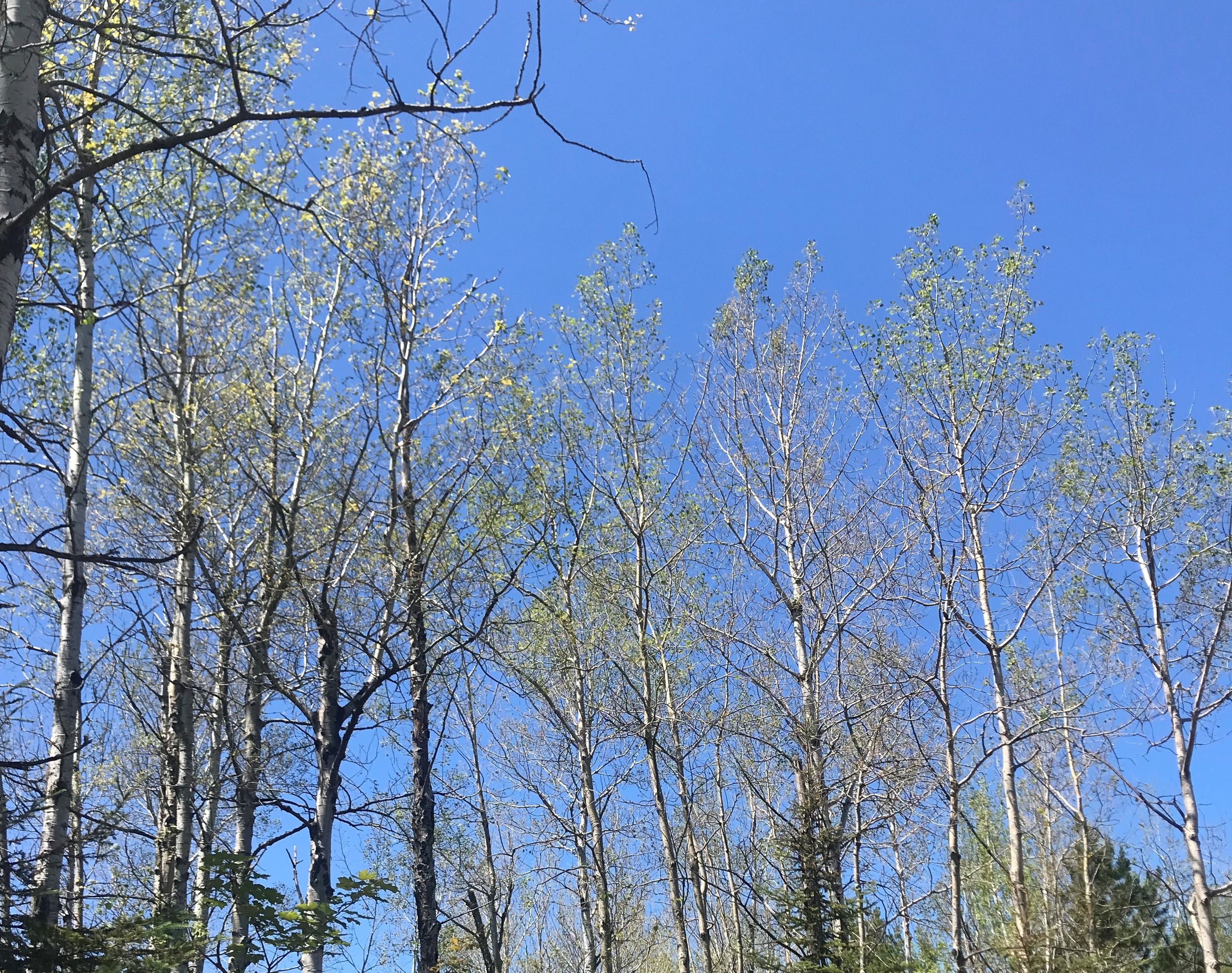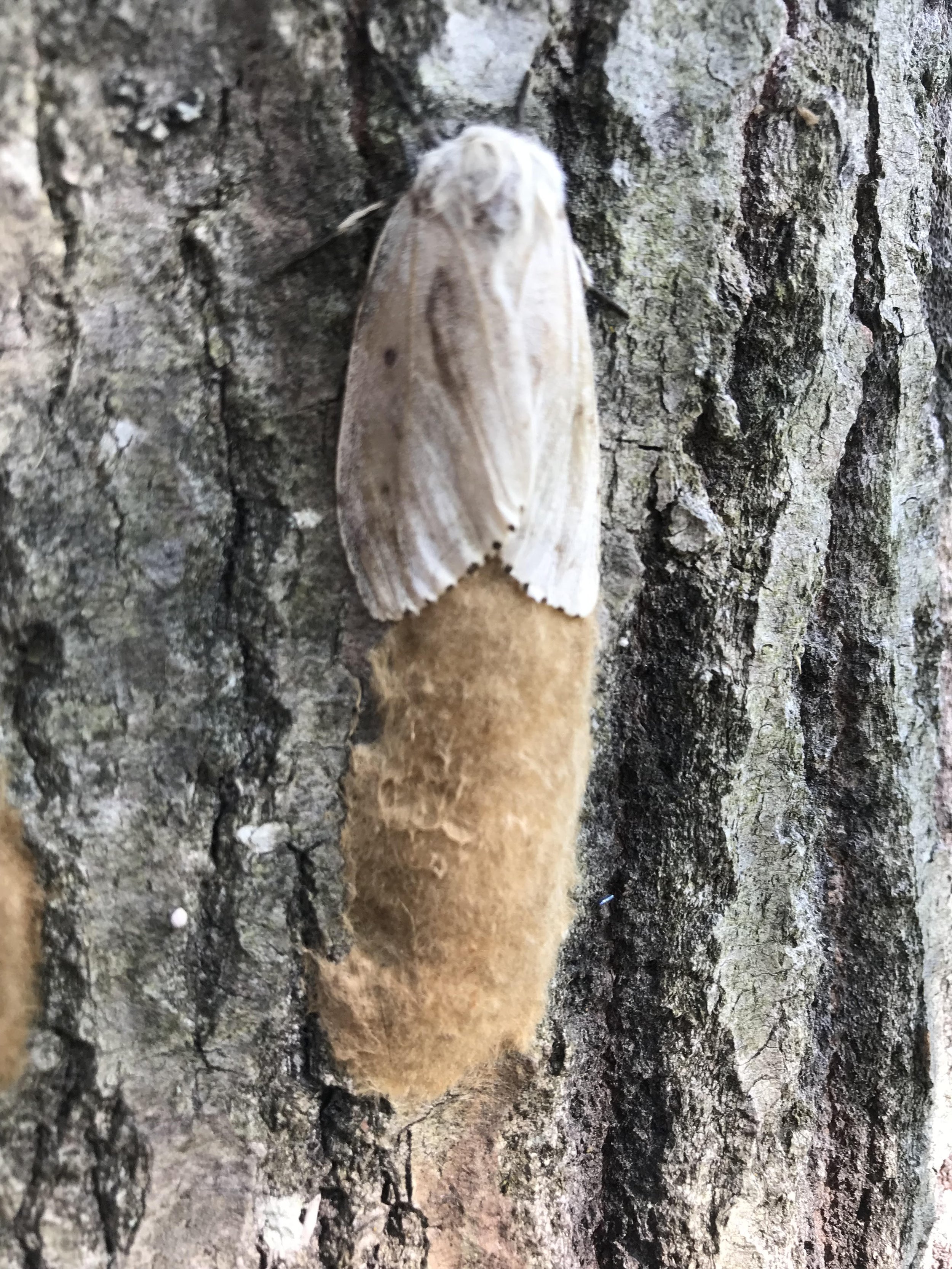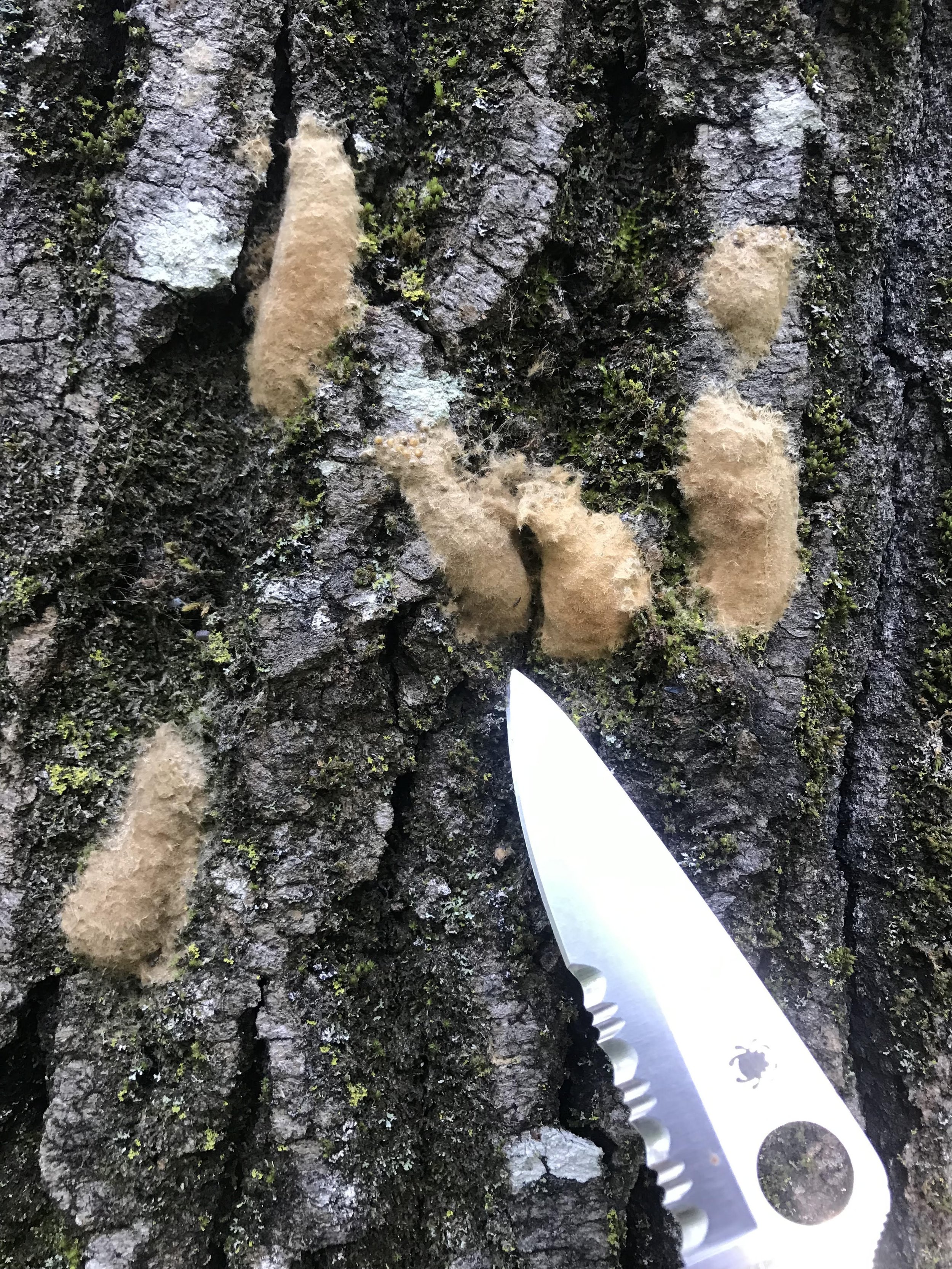Spongy Moth on Madeline Island 2022, Autumn Update
/Whether you live here on Madeline Island or visited for just a few days this summer, you probably saw signs of the spongy moth (formerly called gypsy moth). I knew there were going to be some spongy moths on the island this summer because I did a survey for spongy moth egg masses this past spring that was included in the MIWP 2022 newsletter (See the May 12th article in Education & Advocacy on this website). The intent of the survey was to get some idea of the number of egg masses in the area, and thus the potential for defoliation in 2022. Working with guidance from Wisconsin DNR forest health specialists, I selected areas to survey that were at high risk of spongy moth introduction based on public use, especially by summer visitors. These included campsites and parking lots at the Town and State Parks, and trailheads throughout the island.
Except for a couple of sites within the parks I did not see many egg masses. So, I was completely taken aback at the widespread occurrence of spongy moth caterpillars and the extent of their defoliation on the island this summer. I had been completely unaware of egg masses in other areas of the island—areas that I had not viewed as high risk for introduction!
By mid-August large areas of aspen-birch forest, especially along North Shore Road, were severely defoliated, as were individual oak trees and numerous other localized areas of aspen, birch and oak throughout the island. Evidently, low numbers of spongy moths had been in those areas, probably for a few years, but there were not enough to cause obvious defoliation until this summer.
Emerging from eggs as barely visible larvae in late spring, they grew into 2-inch-long bristly caterpillars. Through June and early July these hungry caterpillars were busy eating the leaves of trees and shrubs while “raining” poppy-seed size black frass onto the ground below. Favoring aspen, birch and oak, the caterpillars left many trees with only a few leaves (photos 1, 2)! Defoliated trees that had been healthy began producing a second set of leaves over the next weeks, but we are likely to see some mortality of trees that were already stressed.
1) Spongy moth caterpillar eating an oak leaf.
2) Defoliation of aspen and birch trees along North Shore Road.
The caterpillars stopped feeding in mid-summer and formed dark brown, crusty pupae on tree trunks, branches, signs, houses—just about anything. I even found several clustered on the back of my trail Cam that had been strapped to a small oak on our driveway (photo 3)!
Adult moths emerge from the pupae beginning in late July. They live about two weeks and do not eat. Males fly in search of female moths, which do not fly, but release a chemical called a pheromone, into the air to attract the males. After mating, the female lays her eggs in a light brown, spongy looking mass. Each egg mass is about the size of an elongated quarter and contains from 200 to 1000 eggs (photos 4, 5).
3) Spongy moth pupae on back of trail cam.
4) Female spongy moth laying egg mass.
5) Six spongy moth egg masses.
It was not only on Madeline Island that spongy moth caterpillars were busy. The WI DNR estimates that 80,000 acres of the Bayfield Peninsula had some level of defoliation, mostly due to spongy moth. Another insect, the oak leaf roller, also contributed to oak defoliation on the mainland and likely on the island as well. Spongy moth outbreaks with significant defoliation were reported this summer in seven counties in southern Wisconsin, and in several other states in the East and Midwest.
The population of spongy moths is likely to be high again next year, with continuing mortality as defoliated trees will be especially impacted by other insects, diseases, and weather. Outbreaks of spongy moth generally last 2–3 years, with anywhere from 5 to 30 years between them. The most recent outbreak on Madeline Island was in 2005–2006. Weather is very important in its effect on the frequency and severity of outbreaks, mainly impacting the predators and parasites of the spongy moth and tree health.
6) Spongy moth caterpillars and pupae trapped under cloth band.
There are things you can do to protect high value trees in a yard or small woodlot. Between now and the time the eggs hatch next spring, destroy egg masses by scraping them into a container then soaking in sudsy water for two days before discarding. Or spray the egg masses with a horticultural oil. Golden Pest Spray Oil is a good one because it's mainly soybean oil. Before the eggs hatch in the spring, bands of sticky material can be applied around selected trees to trap young caterpillars as they crawl up the tree. As they grow bigger, caterpillars can be trapped by tying a folded piece of dark cloth around the tree, at breast height. Caterpillars crawl down from the tree during the day to hide from the sunlight and will be caught in the fold of the cloth on their way back up to feed late in the day (photo 6). Caterpillars should be removed daily and destroyed. University of Wisconsin Extension Service has excellent detailed information on management practices for homeowners and owners of woodlots.
The options for managing spongy moth over large forested areas are mainly aerial applications of biological insecticides or mating disrupters. Management decisions are based on the extent, type and cost of the spongy moth impact, and the cost of treatment. Treatment of areas in which spongy moth is not established may be supported by State and/or Federal funds. Where the moth is established (based on a standard set of criteria), as here in Ashland County and on Madeline Island, local and private sources will sometimes fund treatments. More often in these areas, the decision is to let the insect pest go through its natural cycle.
REMEMBER: Human movement of infected items is the main way spongy moth is introduced to new locations. Before leaving the island and before coming to the island, inspect and destroy all forms of spongy moth (egg mass, caterpillar, pupa, or moth) on any items you are carrying, including firewood and your vehicle.
Resources for more information:
https://dnr.wisconsin.gov/topic/foresthealth/spongymoth
https://datcp.wi.gov/Pages/SpongyMoth.aspx
https://fyi.extension.wisc.edu/spongymothinwisconsin/
Please call me or email me if you have questions.
























